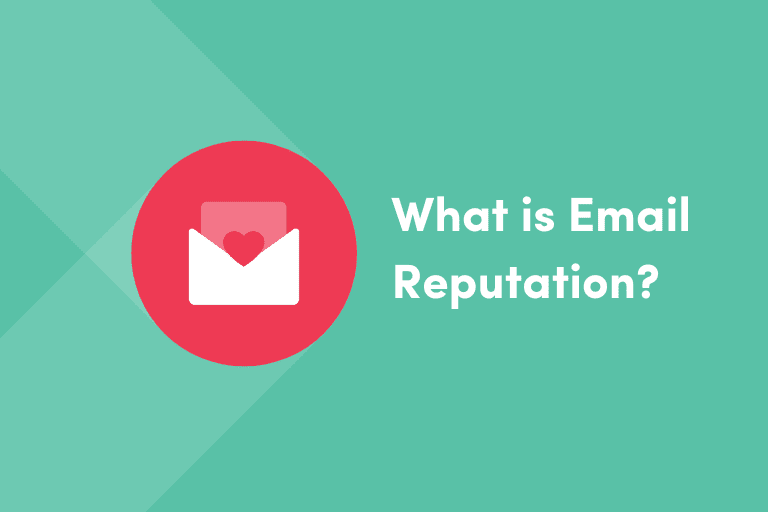At its most fundamental level, email reputation is your brand’s trustworthiness in the eyes of the mailbox or filtering providers (Gmail, Yahoo, Apple Mail, etc.). Similar to your personal reputation, email reputation is all based on your historical actions.
Also mirroring real life, there’s steps you can take to improve or build up your email reputation but, at the same time, there’s actions that can negatively impact your email reputation. So where do you start?
First, let’s look at how email reputation is determined.
What Determines Email Reputation?
Each system or provider has their own way of calculating reputation and, therefore, use different methods and metrics to determine if senders are generally “good” or “bad.”
Given that each provider has their own “secret sauce” in determining reputation, they, of course, aren’t going to disclose those helpful details. But there’s a handful of these metrics or behaviors that we know all providers look at, in some capacity. If we can use these metrics as our North Star, that can help shape our sending practices that will eventually lead to a good email reputation.
What’s Good? What’s Bad?
While it’s not completely transparent, there are certain metrics that can positively or negatively impact email reputation. These metrics are either thought to be looked at or, even better, have admittedly been considered by email providers when determining email reputation.
Bounces
Bounces are messages that fail delivery due to a temporary or permanent issue originating from the receiving server. Because bounces can vary by type, these get the “it depends” treatment. Generally, we classify bounces as either soft or hard.
Soft bounces are usually temporary issues that could be due to a variety of factors—both in and out of your control. They need to be reviewed on a case-by-case basis to determine the cause.
Hard bounces, on the other hand, are due to recipient addresses no longer being valid. This could be due to it being entered incorrectly or because the address is old and that mailbox is no longer in operation. Hard bounces will count negatively towards your brand’s email reputation.
Complaints
Complaints come from people who have clicked on “Report Spam” or, in some cases, moved your mail to the spam folder. This is the big one you want to keep an eye on to keep complaint numbers low. Providers are weighting this signal pretty heavily in determining your brand’s email reputation. Too many complaints will get your mail filtered or even blocked.
Spam Traps
These are specialized addresses or domains that were designed to look like real users but they’ve either never signed up to anything in their lifetime or they were used years ago but have not been active in any recent timeframe. The goal of spam traps is to see which senders are not utilizing best practices. Traps can be operated by mailbox providers or third-party anti-spam companies, like Spamhaus. Sending emails to too many of these spam traps can also ding your reputation or get you added to a blocklist.
Engagement
Engagement is all-encompassing of user interaction with the mail. This naturally includes opens and clicks, but also things like replying to an email, moving it to a folder, or moving it out of the spam folder. These all would be considered positive forms of engagement and will help boost your brand’s email reputation.
The more engagement you can drive, the better your reputation will be. Too little engagement and you’ll start to see your good reputation chip away. Granted, we only have insight into the opens and clicks for tracking, but the mailbox providers are looking well beyond those metrics when examining engagement.
Using the Metrics to Your Advantage
Now that we have a good idea of what constitutes good and bad reputation factors, you can start to tailor your subscriber lifecycle strategy. Whether you’ve been sending for a while or just getting a program off the ground, it’s important to pay attention to these various metrics to see how they’re starting to trend.
Knowing the Signals
For example, if you’re seeing high amounts of spam traps and hard bounces, you’re likely going to see lower levels of engagement, which can drag your reputation down. This is often indicative of an older list or less-engaged audience. Since most ESP’s will automatically suppress hard bounces after the first bounce, if you’re seeing a high amount of hard bounces, it’s telling that you haven’t been emailing this list very often as they would have been cleaned up over time. Mailbox providers are likely starting to become more suspicious of your mail.
Conversely, if you pull back on the segmentation a bit more, you can target a subset of customers that have recently opened, clicked, made purchase, or used the web app which means we’ll have a higher proportion of engaged users which should give us higher open and click rates but also fewer bounces, complaints, or spam traps. Because of this higher engagement and fewer negative signals, mailbox providers are likely to be more trusting of your brand and give us a higher reputation, allowing you to send higher volumes and more mail landing into the inbox.
Double Opt-In
Because engagement is so important, it’s paramount to have clean lists and to preferably use a double opt-in practice to ensure you have good data coming in. It also reduces the likelihood of hitting spam traps and hard bounces since they won’t engage with the opt-in message and therefore won’t be added to your lists.
The road to a good reputation becomes a balancing act between trying to have enough positive metrics and engagement to offset and outperform the negative ones while also sending enough volume to support business goals. Sending everything to everyone is no longer a viable strategy. Providers are more protective of their networks and users, and through the help of machine learning and AI, they can let the machines make more of the decisions. It’s critical we pay attention to these signals and pivot when we see changes to our reputation.
How Do I Know My Email Reputation?
Here’s a handful of places you can check on your reputation. Let’s take a look at the biggies, and let me note, they’re free.
- Google Postmaster Tools: The de facto site to monitor your Gmail reputation for mail going to gmail.com and googlemail.com.
- Microsoft SNDS: Microsoft’s version of a reputation dashboard. This will be your go- to for all the email you’re sending to Microsoft consumer domains (hotmail.com, outlook.com, live.com etc.). Their SmartScreen filter is what drives much of their decision making and the SNDS dashboard will give you a Red, Yellow, Green verdict on how your mail was perceived that day. They also disclose the number of bounces as well as how many traps you hit on their network.
- Sender Score: Validity’s all encompassing single score for reputation. While this score can give you a good pulse check, we encourage people to take it with a grain of salt because of the number of factors that go into reputation, as we discussed above. It’s difficult to boil it down to a single number to know definitively how your reputation is doing. It’s a good indicator, but should be used with some of these other tools to get a better overall picture.
- Cisco Talos Intelligence: Another tool designed to give you a quick glance of your IP reputation. They’ll score IP’s as Good, Neutral or Poor. They’ll also tell you if you’re listed on a thirds-party blocklist or their own Talos Security Intelligence blocklist.
Can We Wrap it Up Yet?
Before I send you on your way, I’d be remiss if I didn’t mention to make sure you have your authentication all squared away as this is how many providers will assign your reputation. It’s imperative that you have your SPF, SKIM & DMARC all configured correctly. Chances are this was completed even before sending, but it never hurts to double check.
As you’re reviewing your metrics, add these reputation tools to your checklists so you can see how you’re being perceived by providers. If you notice your reputation is starting to decline, review any recent changes and try to revert those to see if things pick back up again. If they still don’t pick back up, consider more targeted segmentation to reduce less engaged subscribers which should help drive higher engagement rates until you see that reputation come back up again.
Reputation is almost always fixable, we just need to give email providers reasons to believe in us again.
To learn more about Iterable’s Professional Services, reach out to your CSM. If you’re not an Iterable customer yet, schedule a demo today.





























